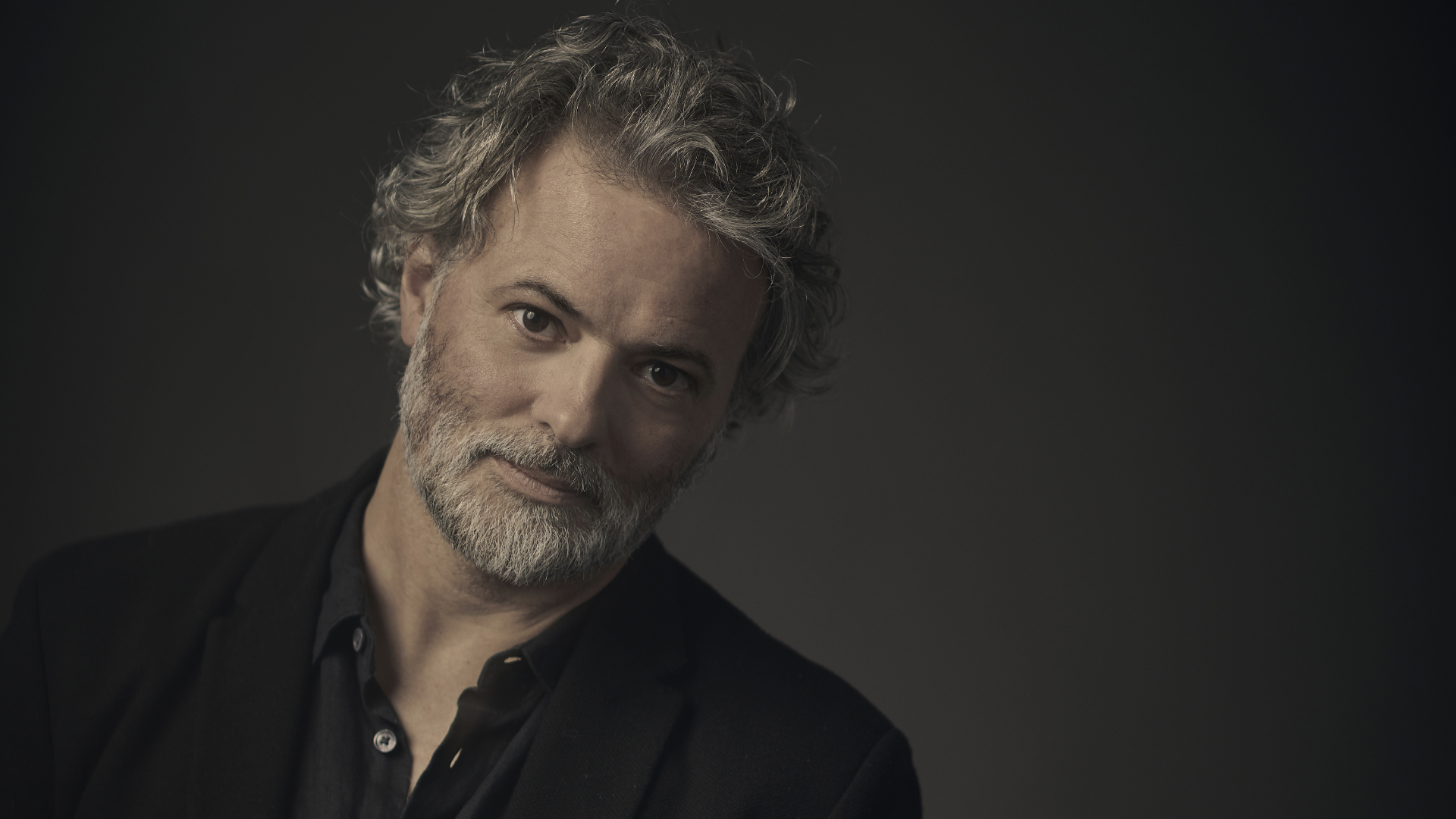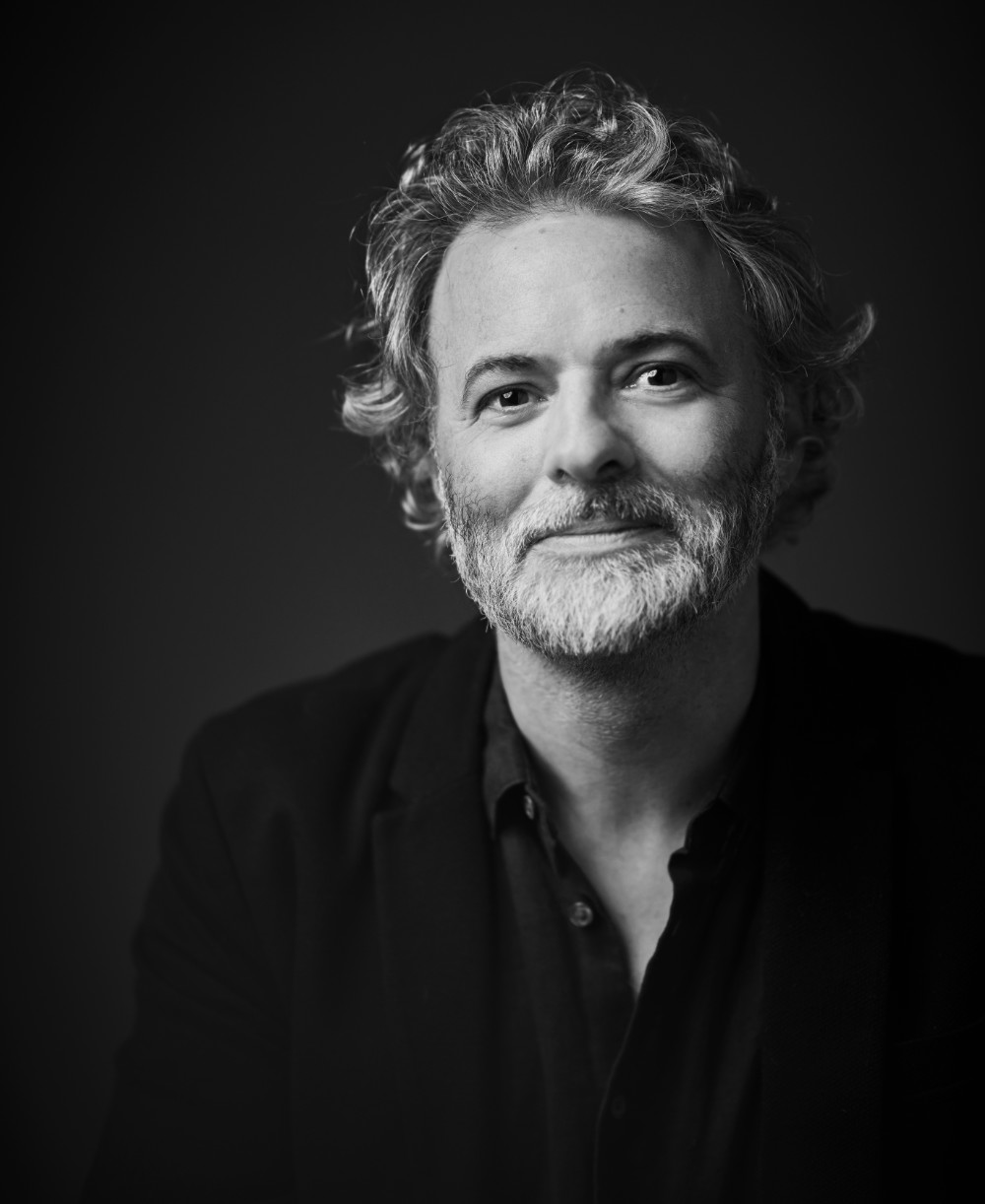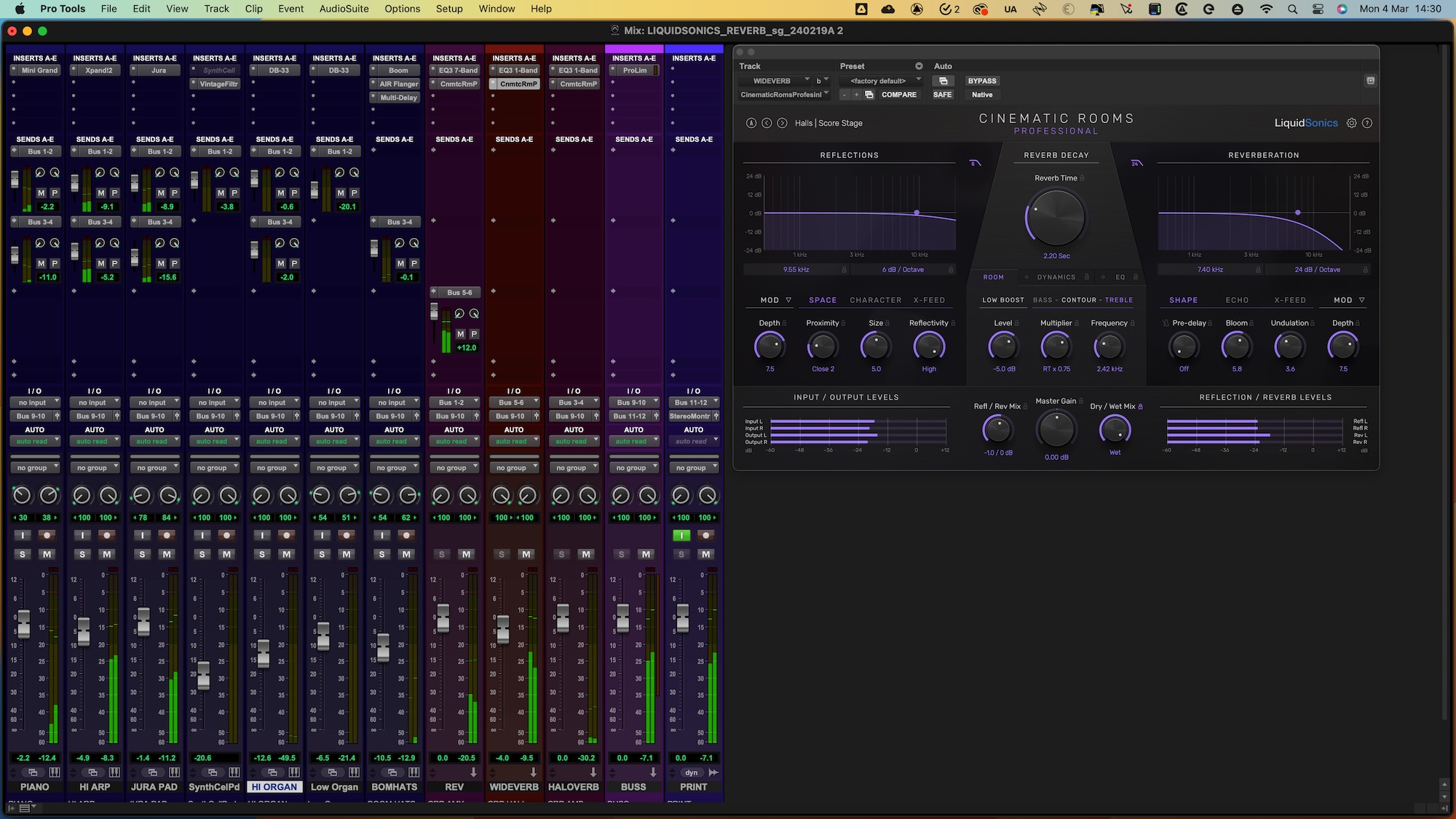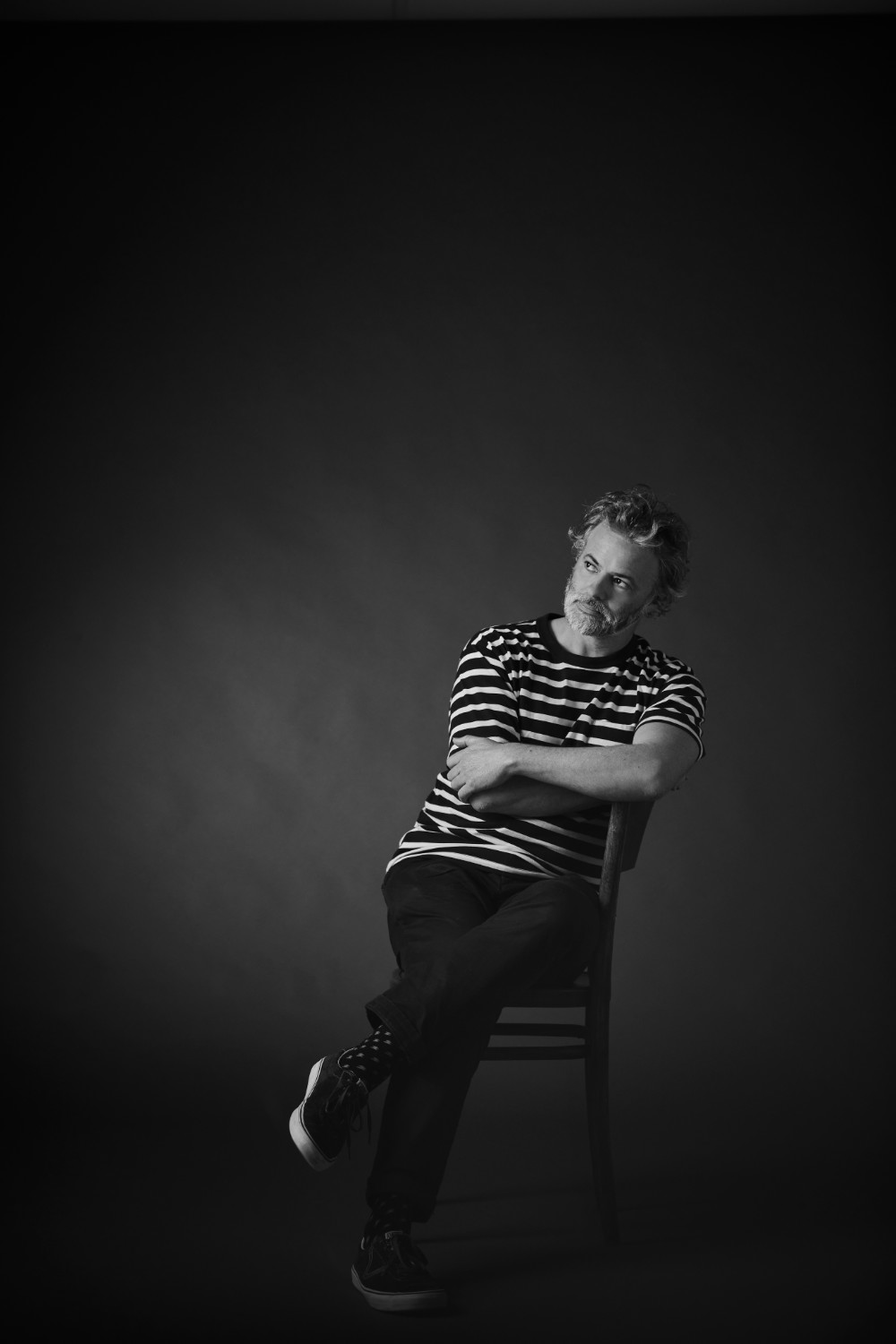
Stephen Gallagher is an award winning composer and music editor based at Sir Peter Jackson’s premier Park Road Post Production in New Zealand. Deeply influenced by the eclectic musical environment of his upbringing, Stephen studied composition at Victoria University of Wellington and, whilst he loved immersing himself in composing music, his passion for the shared experience led to the more collaborative process of film scoring and sound editing.
His impressive and varied portfolio includes notable roles such as Supervising Music Editor for Peter Jackson’s The Lovely Bones, where he composed additional music to complement Brian Eno’s original score. Stephen was also Music Editor for The Hobbit film series and composer of two of the songs in An Unexpected Journey. In 2022 he won both a Golden Reel and an Emmy Award for his work on Peter Jackson’s critically-acclaimed documentary series The Beatles: Get Back – a poignant moment for the son of ardent Beatles fans.

Do you have some kind of methodology as you approach your composition for film? A method that helps propel you into some kind of creative process?
For me, I just want to listen to the Director, to pay close attention to anything they feel that they want to tell me about their film. That’s the best place for me to start because really that’s who I’m working for.
Every Director has a different sort of style and way that they make films. The film that I’m lucky enough to be working on right now, which is a Lord of the Rings anime called The Lord of the Rings: The War of the Rohirrim, is two hours of music. The Director, Kenji Kamiyama, is an amazing storyteller and a generous collaborator. Working with him has been so great. Just listening to his carefully considered, nuanced insights into the film that he’s created, is the biggest inspiration or the greatest jumping off point that I think anyone could really ask for.
The other thing that I would add to that is to make as much material as possible, as soon as possible. Sometimes you go down alleyways or you try musical ideas that don’t work, but that’s great because that’s just a direction you can take off the table and it helps to narrow your focus on where you do need to go.
Do you not think that Directors come to you because they want part of what YOU are in that movie rather than you being told what to do?
Well, I’d like to think that. I’m not sure that’s always the case.
I ideally hope that Directors are coming because they want someone that they can collaborate with. Someone who will listen and go on a kind of detective case or puzzle-solving mission with them. You are trying to figure out what this is and what ingredients we can put in this dish or how we can best serve their film with music and what language that needs to be, or what sounds we need to populate the score with, or, just as importantly, what we don’t put into the score.
Talking about sound here, do you have a certain palette you work from? Do you sit down at a piano first and come up with some melody lines? Or do you start with sound and come up with sound ideas? What kind of way do you approach this?
Why I started being involved in music was because of sound, and primarily that’s through working with synthesizers or having an attraction to synthesizers at a young age. The reason I got into music was because I enjoyed playing with sounds on synthesizers and that’s still really where a majority of my starting points are.
The approach to making a score can differ depending on a number of factors – what the Director tells me they want for their film, what the film looks like, the story, the style. It often for me starts with sounds and I very rarely start with melodic ideas. Those do come, but they’re secondary in my process to the sonic landscape and those sounds can come from anywhere. I recently did a short film, a really beautiful, beautiful film. It just played at Sundance. It’s called Lea Tupu’anga (it means ‘mother tongue’ in English) and the story is about a woman who is of Tongan heritage but doesn’t speak Tongan and is trying to communicate with a Tongan man who needs her help. It’s about her coming to grips with her past and her heritage. So, for that score, I started looking at Tongan music, it wasn’t something I really knew much about. I found this instrument called the fangufangu, a double red nose flute which is the oldest instrument in Tongan music culture, as far as we know.
The sound of it was quite soft. These flutes were traditionally used for waking the royal family up from their sleep so they’re not like buzzing alarms, they’re soft, undulating sounds so I recorded one of those. To me, in this example, that sound was indicative of the main character’s journey towards her heritage and the instrument represented the language, the heritage, her culture. When we see her at the start of the film, she is not in possession of that and she’s almost not in possession of how much she doesn’t know about her culture. It’s meeting this man who needs her help – he’s like the gateway to her going on this journey.
With that recording I made of the nose flute, I processed it and processed it until it became this textural moving sound world. Sometimes when you process things and you slow them down or you speed them up or you re-pitch them, especially if the sounds are fairly complex, like an overblown wind instrument, these melodies and shapes start to suggest themselves. My basic idea was that this instrument would be disguised by the processes that I put onto it until our main character starts her journey exploring her heritage and her language and then that instrument becomes almost like a beacon or a lighthouse and it starts to sort of emerge from the processed fog and become clearer and clearer. So that’s the sound world that I start and once I’ve got that, it’s really about exploring that material and sort of stretching it and inverting it and just making it the fabric around the story of the film.
How much of a part does reverb play in that world?
Quite a lot. Cinematic Rooms and Seventh Heaven are both beautiful and a part of my sound design process.
What sort of tips would you offer to composers about using reverb in their composition? How soon does reverb come into your story when you’re making a sound?
Oh straight away. My first experience with effects was when I was a teenager, I borrowed guitar pedals from people. My first synth that I learned to program on was a Juno 106 and you’re programming this thing and thinking, “…this sounds amazing…”, and then you add some processing, like a guitar pedal reverb or delay, suddenly it’s like, “…ah, wow. It’s like magic!” Reverb and delays were huge for me early on! I use it now for processing and making sounds, but I also use it for placing things in a sound world, a sound space.
So which presets in Cinematic Rooms do you tend to use?
I use the Amethyst Hall, it’s a great sounding reverb, but I also use a couple of the Scoring Hall reverb presets. I have three reverbs, (three Cinematic Rooms), I have an EQ before it, and I roll off the low end at about 80 Hz, and then the top end and the reason is because it just helps keep the muddiness out of the reverb. So, let’s just say I use an Amethyst Hall for that and then I’ve got a send from that channel into another reverb, a different hall setting, and it’s probably slightly shorter, maybe two seconds.
So basically this is me just trying to create extra width and it’s a trick that a friend taught me whereby you take the output of the reverb in the first insert, send it to another reverb, and before that reverb you put the signal out of phase, you flip the panning but you lower the volume on the channel between four and six dB, depending on the material you’re working with. It creates this sort of extra width in the image.
So the first reverb is feeding the second reverb, is that what you’re saying?
Yes, yeah, that’s correct.

That’s correct. Yeah. And then the third reverb I guess you could do it with a plate, but I use one of the ambience settings in Cinematic Rooms. And I’ve got another EQ before that as well, and it’s rolled off at about 800 Hz, so nothing at the low end is getting through it. I try to make it a dense kind of ambient setting and I just fire any high, and particularly short or percussive material, into that reverb and it sort of gives a little sparkle, a little detail on the top end. Basically with those three reverbs, it’s about putting things in a good space, but also giving it a little bit of width and then a little bit of definition or a little bit of detail on the top. It’s kind of like layered reverbs for a sort of a more complex sounding environment.
What advice would you give to somebody just wanting to compose for film and trying to make a life out of it?
It’s important to remember that the majority of films, TV or media that you may have the opportunity to work on are collaborative efforts. It’s a team effort. Listening to what your Director wants and being a good collaborator and being a good team member are really good things to practice doing and to keep working on.
I think regardless of whether you’re doing composition, or you’re a sous chef, or you’re an architect, or you’re a novelist, and maybe it’s worse now thanks to the social media that we’re bombarded with, but we often, (and I’m very guilty of this), feel that we need to compare ourselves to others. That’s a dangerous thing to do. Every single composer that I’ve had the privilege of talking to, not one of them has had the same sort of trajectory or the same journey to where they are now. They’re all different. They’ve come from different places. There’s some commonalities across all of them, but no one has the same journey. I think enjoying your journey and accepting that it’s unique even though it may not be, in your eyes, perfect all the time.
It’s about being you. It’s also about working with other people and respecting that it’s a team environment.
Stephen Gallagher images: Amber-Jayne Bain

